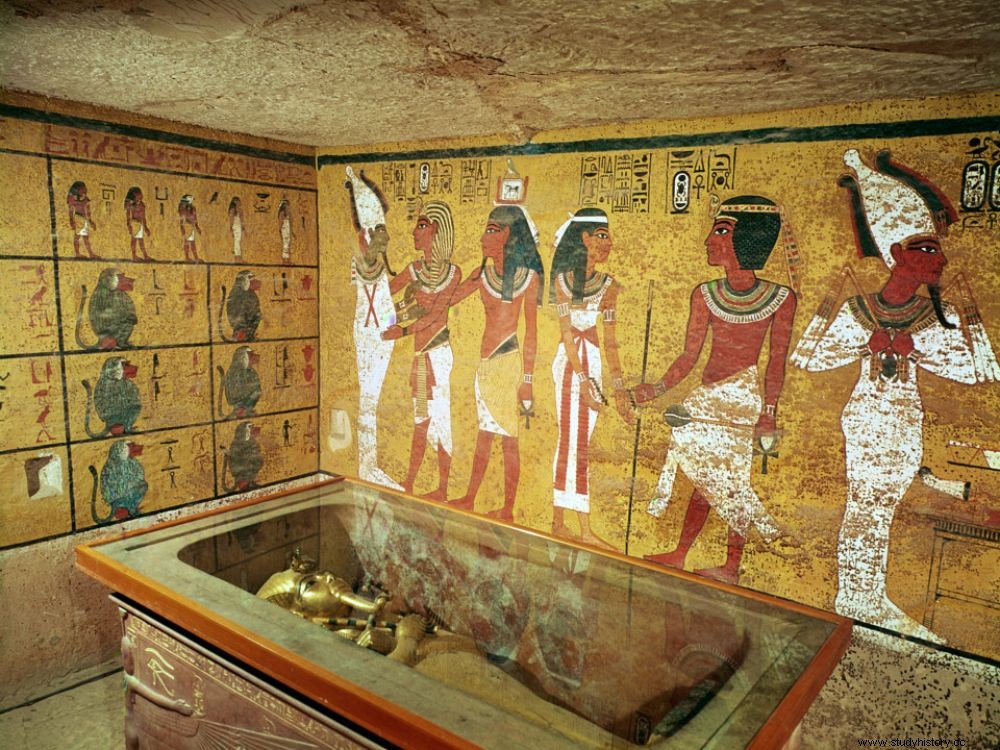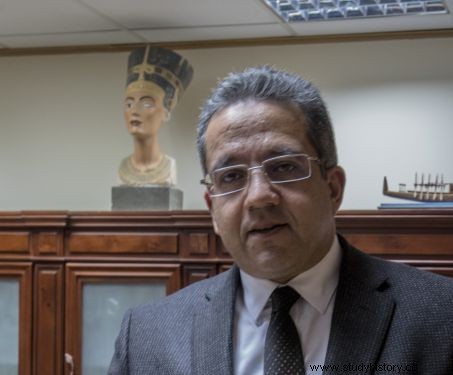An unprecedented investigation using new generation radar technologies should soon be carried out inside the tomb of Tutankhamun, in Egypt, in order to verify the possible presence of unknown cavities there.

Tutankhamun's burial chamber in the Valley of the Kings, Egypt.
The news rekindles the suspense! After several months of stand by , further in-depth investigations may soon be conducted in the tomb of Tutankhamun (KV62) near Luxor, Egypt. The search for unknown cavities in the hypogeum of the famous ruler of the 18th dynasty is therefore still relevant. But teams change! This time, it is scientists from the Polytechnic University of Turin (Italy) who should go to the Valley of the Kings with new generation radar equipment to examine the famous tomb discovered by the Briton Howard Carter in 1922. "It will be a rigorous scientific work of several days, even several weeks" , explained the leader of this team Franco Porcelli, director of the project and professor of physics at the department of applied sciences and technology of the Polytechnic University of Turin (Italy). Preliminary investigations are thus planned in the coming weeks.
In 2016, the whole world was kept in suspense by new explorations in the tomb of Tutankhamun
Let's remember. In 2016, the whole world was kept in suspense by new explorations carried out in the tomb of Tutankhamun. They followed speculation by British Egyptologist from the American University of Arizona (USA), Nicholas Reeves. The idea put forward by this specialist in the 18th dynasty was the possible presence of an unknown room in the eternal residence of Tutankhamun, a young king who died at the age of 19 (1324 BC). Faced with his sudden death - and without a tomb prepared to receive him - the priests would have buried the young pharaoh in a burial which was not intended for him:that, according to Nicholas Reeves, of Queen Nefertiti, the royal wife of the pharaoh Akhenaten , his father.
To justify his theory, Nicolas Reeves based himself on the study of very high resolution images (between 100 and 700 microns) produced by the company Factum Arte , during the execution of the facsimile of this royal hypogeum (read Sciences and Future no. 807). It would have enabled him to highlight traces of two sealed openings. In a document published online, Nicholas Reeves estimated that Tutankhamun's tomb had "two doors" secret plastered walls, concealed under frescoes. One on the west side of the current burial chamber, the other behind its north wall.

Mr. Khaled Al-Anani, Egyptian Minister of Antiquities, photographed in Cairo (Egypt). Credit:Francisco Carrion
The first thermal analyzes as well as ground-penetrating radar examinations carried out by the Japanese specialist Hirokatsu Watanabe had, at first, been enthusiastically received by the former Minister of Egyptian Antiquities, Mamdouh Eldamaty, for whom the presence of two coins unknowns beyond the north and west walls were 90% plausible. This was effectively confirmed by the preliminary analyzes of the radar examinations carried out by the Japanese expert. These were officially announced Thursday, March 17, 2016 by Mamdouh Eldamaty himself, during a press conference given at the headquarters of this institution, in Cairo.
We had to wait for a fallout from the media fever...
But the Valley of the Kings being riddled with cracks and natural cavities, a second series of control radar scans carried out by a team from the National Geographic Society did not reach the same conclusions, immediately dampening the hopes of researchers and numerous media especially from all over the world. In May 2016, an international conference organized in Cairo also failed to agree with the scientific community on the interpretation of these results. These events having taken place at a time when there was a change of minister at the head of the Department of Egyptian Antiquities, the choice was then to put this project on hold. Time to bring down the media fever.
A gestation that will therefore have taken nine months. It is now leading to new scientific proposals which have won the approval of Khaled al-Anani, the new Egyptian Minister of Antiquities, an Egyptologist himself:"We had not canceled this project, but we preferred dealing with scientific institutions. A serious proposal was made by Italy. The Standing Committee studied it and approved ", he summed up in an exclusive interview given to the Spanish newspaper "El Mundo . "We must give time to science and its methods . This new investigation could take years , he also slipped, more cautious than his predecessor. It is possible that there are cavities, as well as there are not ". As for the possibility of finding the burial of Nefertiti there, the Egyptian minister made a point of recalling:"I am an academic. First of all, we must certify the presence of a cavity and, if so, we must specify whether or not it is a tomb. If so, it will be necessary to investigate to know to whom it may belong. We're not there yet! "
For Franco Porcelli and his team, this third series of radar surveys should provide a definitive answer to the hypotheses posed by Nicholas Reeves, who is not involved in this new research, any more than the National Geographic Society. The extension of these investigations to the whole of the Valley of the Kings will perhaps make it possible to discover other tombs. After all, those of Amenhotep I, Thutmose II, Ramses VIII, as well as many queens have still not been unearthed!
